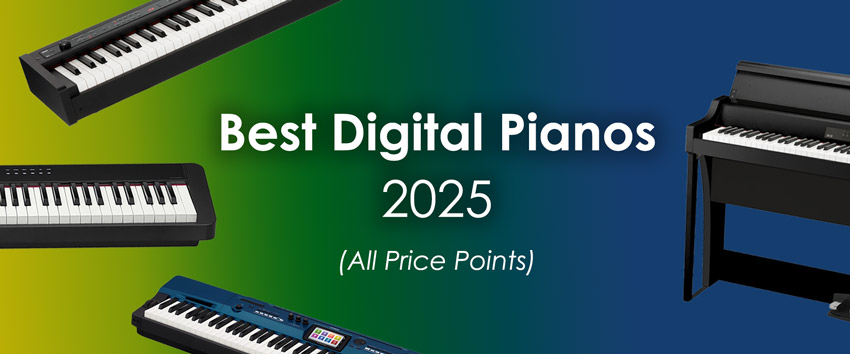
Learning to play the piano is something I’d recommend to anyone, but the price barrier to start learning might seem a little high.
It’s been nearly two decades since prototype digital pianos hit the market, and that means we’re working with mature technology. Regardless of your budget, there’s a good keyboard that suits your needs.
As longstanding fans of the digital piano revolution (as you’ve noticed from our website), we’ve reviewed and tested dozens of digital pianos throughout the years.
Our Top 5 Lists feature the best digital pianos and keyboards for each price point, ranging from budget beginner setups to wooden, furniture-style consoles.
So, in this article, we’ve decided to combine all those best choices into one article and present them to you.
Your Perfect Digital Piano: What to Look For?
To start, these are the main factors you should consider when purchasing a new digital piano:
1. Budget
High-end digital pianos are crazy expensive, some costing as much as a new car! If that’s up your alley, then go for it; but do your research first. If you want bang for your buck, you’ve come to the right place.
2. Features
If you’re just starting out, all you really need is a digital piano that facilitates the practice of proper piano technique. Experienced players might want keyboards with sound-shaping or detailed recording facilities. We’ll briefly cover what you can expect and why certain features are essential.
3. Goals
True beginners might be a bit apprehensive about starting with an expensive digital piano. What if you find it’s not for you? Well, it’s perfectly fine to start out with a cheaper digital piano or even a keyboard. Upgrades are always available down the line when needed.
4. Space
This is a minor consideration, but if you’re living in a small apartment, you might want to avoid a furniture-like console.
Bigger isn’t always better with digital pianos, and slab-style versions are still worth checking out. In fact, our lists offer recommendations from both categories.
Best of the Best: How Did We Choose?
Our lists favor instruments that offer a perfect blend of quality and playability.
We’ve combed through the myriad of eligible options to pick our personal top five picks. If you’ve already got a budget in mind, feel free to jump ahead to the articles that fit your budget.
Our articles give intuitive details for each choice. Each featured instrument has its own merits, so our top choice may not be the perfect keyboard for you.
By offering 5 (or 4) choices, we cover more ground and provide extra insight to demonstrate the merits of each choice.
However, these articles are long reads, and while the extra detail will be helpful for some, you might be looking for a quick summary instead.
If that’s the case, then this article is for you.
We also linked our Top 5 articles and related reviews (whenever applicable) in corresponding sections. If you find any category especially interesting, you can jump straight into our more detailed accounts to learn more.
With that out of the way, let’s begin.
Here are one of the best keyboards and digital pianos you can get in 2024:
- Casio CT-S300 – Best Cheap Portable Keyboard (Under $150)
- Yamaha PSR-E373 – Best Beginner Keyboard Piano (Under $300)
- Roland FP-10 – Best Beginner Digital Piano (Under $500)
- Roland FP-30X – Best Intermediate Digital Piano (Under $700)
- Kawai ES920 – Best Professional Digital Piano (Under $2,000)
- Casio PX-870 – Best Home Digital Piano (Under $1,000)
- Kawai KDP120 – Best Home Digital Piano (Under $1,500)
- Yamaha CLP-735 – Best Premium Home Digital Piano (Under $3,000)
Portable Digital Pianos:
Portable digital pianos are sometimes called slab-style pianos due to their shape and size.
While the name might imply that they are designed for musicians on the go, that’s not entirely true. Digital pianos of this kind are generally cheaper as their construction material costs less.
That’s not necessarily a black mark against their quality since these digital pianos (apart from the keyboards in the sub-$150/sub-$300 range) can still feature hammer-action keys and built-in speakers.
Ultimately, that’s really all you need from a digital piano.
As we rise through the price tiers, you’ll find digital pianos with extra nifty features, like multi-speaker setups, sound editing, synthesis and even software modeling.
If what we’ve covered so far tickles your fancy, then read on.
Best Portable Keyboard Under $150 – Casio CT-S300
We do realize that money will always be a factor under consideration, and even our cheaper recommendations might be overly expensive for the thrifty spenders out there.
At the absolute lowest price point, we’ve selected these keyboards, which include the bare minimum required to get you through the basic learning processes. Upgrades are a must if you decide to pursue music further.
These are as far off from real pianos as you can get, and they’re not particularly impressive, but they’re good enough to build up the fundamentals.
So, with our expectations tempered, let’s get into our drastic price saving measures.
Our Best Pick
The Casiotone CT-S300 is our personal favorite choice as a budget keyboard. At this price point, sounds and keys are as far from the real deal as you can get, so it was hard to choose a winner here.
The CT-S300 is a new offering from Casio and a part of their reboot of their classic Casiotone keyboards. Casio also entered our sub-$300 list with their cheap CTX-series keyboards, and a similar sound chip is included in the CT-S300.
While I wouldn’t call the included 400 sounds particularly good, they are good enough for practice purposes. There are even basic rhythms and stripped-down accompaniment features too to spice things up.
In Play
While there are cheaper keyboards in the Casiotone line, the CT-S300 is the cheapest option that includes velocity-sensitive keys, which makes it the right choice.
As we’ve mentioned before, playability is the most important aspect at this price point, and having reactive keys that respond to your playing intensity is a must to build up dynamic control skills.
The keys themselves are very basic synth-style keys, which is sadly the norm at this price range. These won’t get you too far in terms of piano-focused proficiency, but they are good enough to build up fundamental muscle memory.
For what it’s worth, the keys don’t feel as cheap as many other entry-level keyboards mostly due to the textured keytops and block-end piano-style keys.
The main downgrades compared to the CTX-line are that you lose out on the more advanced accompaniment features. You don’t have different variations, and advanced bass-following is absent as well.
Add decent speakers to the mix, and the CT-S300 is a solid budget choice for beginners. Just remember that better options do exist if you’re willing to pay slightly more.
Bonus Features
Much like other portable keyboards, the CT-S300 can be powered off 6 AA batteries, and a headphone jack is also present for silent practice.
A pitch bend wheel is also included, which is rare even on more expensive keyboards. This allows you to practice synthesizer-focused techniques too.
Finally, you also get a USB to Host port, which not only allows you to record MIDI on your devices but also enables you to use Casio’s Chordana Play app to add a graphical user interface for added control.
While the CT-S300 is very basic, it is a complete package. That’s more than you usually get, and that makes this a great budget choice.
Check the availability and current price of the Casio Casiotone CT-S300 in your region:
Alternatives
We included the Yamaha PSR-E273 in our roundup, and while it does sound better, I still consider the Casiotone a superior choice for beginners.
I’ll give the PSR-E273 this though, it has a built-in MIDI recorder, and a bit more in terms of arrangement features.
However, these aren’t necessary for beginners and might end up becoming distractions that hamper your learning.
If you do want to go that route, consider paying a bit more for the PSR-E373 or the PSR-EW310, which are both better built and well worth the extra price, not to mention the addition of touch-sensitive keys.
Conclusions
When working with a severely limited budget, we did come up with some inventive options. Regardless, the CT-S300 is arguably the best choice.
The star of the newly rebooted Casiotone line is a basic but complete package, and it includes all the necessary features to be considered a proficient practice keyboard.
While there are undoubtedly better keyboards out there, this is hands down one of the best options at this low price bracket.
Best Beginner Keyboard Under $300 – Yamaha PSR-E373
For the beginners out there, shelling out big bucks for a hobby might seem scary.
If you’re concerned about getting as much keyboard as possible for a cheap price, this category is for you. At this price, we’re not too concerned about realism.
The prior Casio CT-S300 is an excellent budget option, but if you’re willing to go a slight bit higher in terms of spending, you might want to look into the Yamaha PSR-E373.
The PSR-E373 is one of the newer arranger keyboards, being released in late 2020. However, we were blown away by how well it fared at just about everything.
I won’t say this keyboard is perfect. When it all comes down to it, this is still a budget keyboard with some cut corners. However, its quality more than makes up for it.
Our Best Pick
The Yamaha PSR-E373 is easily the best budget keyboard we’ve reviewed. Yamaha’s PSR-series was in dire need of an update, and the PSR-E373 really does deliver.
In our opinion, Yamaha’s strength lies in their impressive sound sampling. With an expanded sound set with some high-end sounds, the PSR-E373 sounds great. It’s hard to maintain quality across 622 sounds, but Yamaha pulls it off.
The default piano sound deserves a mention. It is ripped straight from the far more expensive PSR-EW410, which in turn had sounds derived from the $5000 Tyros workstation.
Yamaha’s Advanced Wave Memory (AWM) technology is a bit long in the tooth, but it still sounds decent. The PSR-E373 is easily the best keyboard in this price bracket.
In Play
The downside to budget keyboards are sacrifices made in name of playability. Realistic feeling keys are generally absent, as weighted hammer actions cost a lot to implement.
The PSR-E373 comes with 61 unweighted keys, but a 73-key version exists in the form of the PSR-EW310. The keys aren’t too impressive, but they’re among the better synth-style keys I’ve tested.
Regardless of the lack of realism, the PSR-E373’s unweighted keys are still good for practice purposes. Thanks to well-tuned velocity curves, pianists of every skill level can exercise dynamic control.
The stereo speakers are also solid despite the low 2.5W wattage.
Bonus Features
Being a budget arranger keyboard means you get a lot of extra functionality like rhythms, accompaniment features, and effects (also, let’s not forget about the 622 onboard tones).
Speaking of effects, the DSP effects section on the PSR-E373 is great, with a plethora of different customizable options.
If you’re so inclined, you can run the PSR-E373 off 6 AA batteries. For practice purposes, you can also use your headphones through the rear-facing jack.
My personal favorite bonus is the USB to Host port, which supports both MIDI and Audio. Even premium keyboards skimp on the audio interface functionality, so getting it on a sub-$300 keyboard is a steal.
The PSR-E373 really is a complete package. A word of warning though, beginners might get distracted by all of the extra bonuses.
Check the availability and current price of the Yamaha PSR-E373/EW-310 in your region:
Alternatives
While the PSR-E373 covers a ton of ground as a budget arranger keyboard, you might be looking for something that is more versatile as a song composition too. We recommend the Roland GO:Keys.
This is an amazingly fun keyboard that prioritizes looping and composition over realistic sounds. I had a ton of fun with this during my playtest.
The PSR-E373 might be the best keyboard in this price range, but I consider the GO:Keys the best choice for trained keyboardists. It’s designed like a quality toy, with inspiration in an easily accessible form factor.
Conclusions
The PSR-E373 sets the golden standard for budget keyboards, and as of the time of writing, its easily the best budget option for any beginner looking for an introduction to the world of music.
Best Beginner Digital Piano Under $500 – Roland FP-10
In my opinion, this is the minimum price point if you’re serious about learning the piano. Less than ideal conditions will stifle the learning process, and sub-$300 keyboards aren’t ideal for mastering correct piano technique.
Thankfully, you don’t need to spend an arm and leg to get a good keyboard. For less than $500, you can get a solid digital piano with weighted keys and realistic sounds.
While I wouldn’t call any of our picks perfect, they’re good enough to achieve an intermediate level.
Our Best Pick
Now that the Casio PX-160 is discontinued, the Roland FP-10 is a pretty easy pick for us in this category. While it comes really close to exceeding the $500 price point, it justifies the cost with its excellent key action and great sounds.
Even when the PX-160 was still around, the FP-10 was very close to taking over the top spot of our list. However, the PX-160 did have an edge over its competitors by providing a more complete feature set that wasn’t available in this price range before.
Today, most beginner digital pianos are pretty basic and comparable when it comes to features, so the two main factors that we should take into consideration is sound and feel, and this is where the Roland FP-10 excels.
In Play
The FP-10 is the only sub-$500 digital piano that features triple sensor hammer action keys, Roland’s well-received PHA-4 Standard to be precise, which is the same key action used in Roland’s more expensive models, including the FP-30X and FP-60X.
Triple sensors allow more accurate detection of your keypresses, performing especially well on pieces with quick note repetitions. Escapement gives the keyboard an extra level of authenticity by simulating the slight notch felt when you press the keys about halfway down.
The white keys are also covered with a textured material that simulates ivory and helps absorb excessive moisture from your fingers.
Excellent feeling keys aside, the FP-10 features Roland’s famous SuperNATURAL sound engine.
Roland takes great pride in this technology, as back in the day when it was first introduced, it was pretty much unheard of to use modeling technologies along with high-quality samples to achieve an authentic piano playing experience.
Not only does the FP-10 have a very rich, dynamic piano sound, it’s also the only instrument in this price range that simulates subtle acoustic elements such as string resonance, damper resonance, and key off-resonance.
It’s not just piano sounds either. There are 15 built-in sounds including electric pianos, organs, strings and of course…jazz scat, my personal favorite ?
While the FP-10 sounds wonderful through headphones, don’t expect to be blown away by its onboard speakers, after all the FP-10 has a very slim profile and is not really designed to handle big performances unless you plug it into an external amplifier.
Bonus Features
The Roland FP-10, just like its competitors, is very bare-bones when it comes to additional features. It doesn’t have an onboard MIDI recorder nor the split mode where you could split the keyboard between two different sounds.
You do, however, get all the essentials, such as a metronome, transpose function, dual and twin piano modes, and USB MIDI connectivity.
Speaking of connectivity, the FP-10 is the only instrument in this price range that comes with Bluetooth MIDI connectivity.
Roland offer a free app called Piano Partner 2 that will allow you to access the internal sounds and features of the FP-10 using your smart device, which makes navigation so much easier!
Check the availability and current price of the Roland FP-10 in your region:
Alternatives
The Yamaha P-45 has been hands down the best-selling beginner digital piano out there…and for a reason. Yamaha is a well-known name in the music industry and their products rarely disappoint.
The P-45 is very similar to the FP-10 when it comes to extra features (almost none). With that said, it provides a pretty satisfying playing experience, especially regarding the sound generation.
Some will find the piano tone of the P-45 to be mellower and softer than that of the FP-10, with not as defined bass and treble notes. This is entirely a matter of taste to be honest, so I wouldn’t say there’s a clear winner here.
Speaker-wise, the P-45 might have a little edge since its speakers are facing the player rather than down-facing as in the Roland.
However, the FP-10’s greatest asset remains its key action, which in my opinion, is a closer approximation of how an acoustic piano feels like.
Here is a great video comparison of the Roland FP-10 and the Yamaha P-45.
Conclusions
I’d advise testing both the FP-10 and P-45 keyboards out to see which you prefer. I prefer the Casio for its sound and features, but I also liked the FP-10’s playability.
Both are excellent instruments and equally worthy of consideration.
Best Intermediate Piano Under $700 – Roland FP-30X
More serious piano players demand more features and higher quality.
While the entries in the sub-$500 bracket are competent digital pianos in their own right, they do feel tailored for the entry-level market.
The biggest upgrade with the $700 digital pianos is the sounds. Companies feature higher quality samples in these models over their entry-level counterparts.
Again, we’re not featuring workstation keyboards or keyboards with lackluster key-beds, only digital pianos with full, 88-key weighted keys were considered for this list.
Our Best Pick
Yes, it’s Roland’s FP series…AGAIN. This time it’s FP-10’s big brother, the Roland FP-30X.
It’s one of the bestselling intermediate digital pianos and my personal favorite in this price range.
We’ve already covered the FP-10 in our sub-$500 section, and this is the original, non-stripped-down version of it.
The PHA-4 Standard key action is great and the expanded sound palette, when compared to the FP-10, makes the FP-30X a terrific digital piano.
In Play
As mentioned earlier, Roland’s SuperNATURAL sound engine is used for most of their instruments, from keyboards to electronic drums. It merges audio samples with software modeling for a malleable sound palette. The main piano sound is also solid and recreates the feel of an acoustic piano really well for the price.
All prior recommendations up to this point felt a bit off, mainly due to less detailed sounds, but Roland pulls this off really well.
Aside from the acoustic pianos, there are a variety of other instrument sounds available onboard including some solid electric piano sounds, organs, strings, etc. (56 tones total)
Sounds aren’t the only way that the FP-30X excels.
I rank the FP-30X’s keyboard above other key actions in the price bracket due to a realistic weight and feel.
The PHA-4 Standard key action uses individually weighted hammers coupled with triple sensors, which increases the precision and accuracy of keypress detection.
The keys feel similar to those on acoustic uprights and they recreate the physical mechanics well. It’s a subtle but welcome touch. To be sure, the PHA-4 Standard is among the best key actions you’ll find below $1,500.
The only minor complaint I have with the FP-30X is its dual down-firing speakers. They don’t sound bad, quite the opposite in fact; but they are a bit biased toward the low end and can distort at max volume (not that you need it that loud).
Bonus Features
Wide selection of tones aside, the FP-30X features Bluetooth MIDI and Audio, perfect for using apps to further your learning.
A 1-track MIDI recorder and the essentials are included. Most special, though, is the string resonance, damper resonance, and key off resonance simulation, all subtle touches that enhance realism. All of these are adjustable within Roland’s own Piano Designer app.
Finally, you get dedicated line outputs, which is something that was missing on the old FP-30 and stuck out like a sore thumb whenever we mentioned it.
The only somewhat glaring omission here is the sound effects. Considering the inclusion of some solid electric piano and organ sounds, it would be nice to have more options as far as effects are concerned. But hey, the FP-30X is a digital piano, not a synthesizer, so these things are just bonuses anyway.
The same goes for the limited recording and layering capabilities of the instrument. All the basics are covered, and if you want more external software is always an option.
Check the availability and current price of the Roland FP-30X in your region:
Alternatives
The first thing I’d like to stress here is that this price category is very competitive and has a lot of excellent choices. So, even though we put the FP-30X as the winner here, you should definitely explore the alternatives, which are just as impressive.
Kawai recently updated their ES series, and the new ES120 is a very strong contender to the FP-30X and is definitely worth your consideration if you’re on the marker for mid-range portable digital piano.
While the FP-30X has a little edge in the key action department, the ES120 is hard to beat when it comes to piano sounds. Its SK-EX grand piano tones are known to be one of the most realistic and well-balanced on the market.
While the RHC action feel slightly less realistic than Roland’s PHA-4 Standard in my opinion, it’s still one of my favorite key actions in this price range. Also, due to its lighter nature it would be more suitable for playing genres that include organ, synth and electric pianos sounds, making it more versatile.
Conclusions
The FP-30X’s bestseller status is well deserved. It’s been over 4 years since the release of its predecessor (FP-30) and we can still heartily recommend it as one of the best portable digital pianos available.
The new FP-30X improves on most of the shortcomings of its predecessor and deserves to continue its legacy as one of the best portable digital pianos under $1000 on the market.
Best Advanced Digital Piano Under $2,000 – Kawai ES920
The price jump might seem crazy, so I’d like to open up this section by noting that not everyone needs a $2,000 digital piano.
Most people at the advanced level prefer stage pianos, workstations or synthesizers. These keyboards favor sound designers wanting deep control of their sound. We’re not covering that here.
Digital pianos are more basic, but they do have the benefit of costing less, favoring players who just want a solid piano-playing experience.
Our Best Pick
This was, yet again, another hard category to picking a winner. Most pianos in this range are close in terms of sound and build quality, so it’s hard to pick a straightforward winner.
Our final choice was a tossup between the Kawai ES920 and Roland FP-90X, but we ended up choosing the Kawai.
If we’re going for the best overall piano playing experience, the Kawai ES920 is a safe bet.
Kawai is known for their acoustic pianos and many will argue that their RHIII action (as featured on this model) is one of the best plastic “folded” type key actions out there.
Sounds are also well-made on the ES920. Pure sampling is used, but there’s a clearly observable improvement over previous categories. Kawai’s Harmonic Imaging XL (HI-XL) technology is put to good use here.
In Play
You may write off the RHIII action because it’s plastic, but that’s a rookie mistake. Playing the keys will easily show why people love them.
Kawai has been in the piano business for a long time, since the early 1900s, and their experience in making pianos pays off. These keys feel great and are definitely at the top of their class.
38 tones might seem fairly small, but you know what they say – quality over quantity is always best.
The 10 piano sounds sound great and they’re also quite natural. You can even modify the piano parameters using Kawai’s Virtual Technician to achieve your ideal sound.
The dual 20W speakers are also clear, barely distorting the sound, even at high volumes.
All in all, the ES920 is a solid package that offers some of the best value and arguably the most natural acoustic piano sounds.
Bonus Features
Practically all of the features you’d expect are here – Split, Layer and Dual mode are available, and recording functionality is fairly robust, with a 2-track MIDI recorder and the ability to record both WAVs and MP3s.
The rear panel actually makes the ES920 a worthy gigging keyboard. You don’t just get the typical headphone jack and stereo TRS jacks.
You also get 5-pin MIDI connectors, for integrating legacy gear like sound modules and synthesizers into your performances.
Check the availability and current price of the Kawai ES920 in your region:
Alternatives
As I said, this category has worthy contenders and the Roland FP-90X came really close to winning out.
This is a slightly more expensive keyboard, but it features Roland’s PHA-50 hybrid wood keys, which are one of my favorite key actions out there.
The FP-90X, even its controls, feels great to use. Its unique design won Roland a Red Dot award, which is no small feat!
The reason we chose the Kawai was due to personal preference. The FP-90X sounds great, but its modeled tones might not be for everyone.
I’d recommend testing out both options to see which one you prefer, as both are equally valid choices and well worth their asking prices.
Conclusions
For its price, the Kawai ES920 is an excellent digital piano and easily a top choice for intermediate and advanced players alike.
I’d like to remind you to test out as many of the options we’ve listed as possible to ensure the best choice for you. Chances are, if you’re looking at this price bracket, you already know what you want.
Console Digital Pianos:
Our previous options were portable digital pianos, and while some of them came with matching wooden stands, you’d be hard pressed to call them furniture-like.
Console digital pianos are, in many ways, the opposite of our previous discussions. They’re bulky and more expensive.
They do look great, however, and can serve as beautiful centerpieces for your rooms.
That’s not the only thing worth discussing. These models tend to feature full, 3-pedal setups from the get-go, whereas portable counterparts require a separate purchase.
Which type you choose depends on your needs and interests. We’ll help by showing you our personal top picks.
Best Home Digital Piano Under $1,000 – Casio PX-870
Furniture-style digital pianos under $1,000 don’t necessarily market themselves as being top tier instruments, being more geared towards the entry-to-intermediate level.
However, that’s no reason to skimp on decision making. $1,000 is still a heavy investment, so you’ll certainly want to get as much bang for your buck as possible.
Our Best Pick
The Casio PX-870 was an easy top pick.
As the flagship instrument in the Privia line, it’s easily one of the best value propositions you’ll find.
Casio’s Tri-Sensor Scaled Hammer Acton Keyboard II is used here and feels great to the touch, even simulating the feel of textured ebony and ivory keytops.
While the keys tend to be noisier than other key actions, the feel more than makes up for this downside. The internal mechanisms are responsive, and that’s really all that matters.
The sounds are arguably the best of the bunch as well, with Casio’s AiR sound engine delivering great sounds that use the dual 20W speakers to their maximum advantage.
In Play
Casio is a prolific digital piano manufacturer, but for the longest time I never enjoyed playing their keyboards. Their sound was a major sticking point for me, as I always felt their samples were 2nd rate compared to other manufacturers.
That has changed in recent years and the PX-870 sounds excellent. The keys feel great and the key noise is barely an issue when you’ve got the speakers turned on.
One of the main advantages of Casio’s AiR sound engine here is dubbed ‘Multi-dimensional Morphing,’ which uses modifiable parameters like resonance and hammer response to simulate real piano sounds.
Bonus Features
Split, Layer and Dual mode are available, and you get a 2-track MIDI recorder. Sadly, Split mode is limited to the included Bass sound.
However, the Audio recorder is surprisingly fully-fledged. You can record up to 99 songs, each with a maximum length of 25 min. These songs can then be saved onto flash drives for safekeeping.
Check the availability and current price of the Casio Privia PX-870 in your region:
Alternatives
Roland’s F107 is their unexpected entry into the realm of beginner console digital pianos.
It uses the same PHA-4 Standard action we liked on the FP-10 and FP-30. While the keys are a strength, the PX-870 wins out with a more complete feature set.
Sound-wise, it’s a close call. One can argue that the PX-870 simulates more organic piano sound elements and offers a more powerful sound system than the F107.
That said, there’s no denying that the F107 has a natural decay and a wider dynamic range, thanks to an innovative SuperNATURAL sound engine.

Roland F107 (on the left)
All in all, you can’t go wrong with either of these instruments. Depending on your preferences, one might be slightly more suitable than the other, but overall, these are arguably the best home digital pianos below $1,000.
Conclusions
Casio’s PX-870 is the easiest digital piano among the bunch to recommend. I’d even say it’s worth considering for beginners and intermediate players alike due to its playability.
Great sound and feel are the most important aspect of any digital piano, and the PX-870 nails this.
Best Home Digital Piano Under $1,500 – Kawai KDP120
Furniture-style digital pianos can get a little absurd with their prices, but you don’t need to spend too much to get a great experience.
The $1,500 price range is still geared towards beginners and intermediate players. But you get more features and a larger chassis (in most cases), which improves both aesthetics and sound generation.
I previously praised the PX-870 for its good number of features and impressive degree of quality for the price, so the pianos here really needed to step up their game to impress me.
Our top pick may not be familiar to many, but being popular doesn’t mean a keyboard is the best.
Our Best Pick
Kawai has already shown that they make excellent pianos (the ES920 won our advanced digital piano category), and their KDP120 was our favorite in this group.
This instrument uses Kawai’s Harmonic Imaging sound engine. Although it is one of Kawai’s more affordable console models, it’s no slouch.
A quick listen to demos (or better yet, actual hands-on experience) will show that the samples sound very natural.
Much like the ES920, you can even modify various piano tone parameters using Kawai’s PianoRemote app.
Sadly, the lack of a display makes it slightly harder to make changes without using an external device. Thankfully, Bluetooth support makes connectivity a snap.
In Play
Kawai’s RHCII action used here is similar to the ES920’s RHIII action, despite being a price-level down.
The key action is purely plastic and lacks the synthetic ivory and ebony surface textures used on some of the competitors.
However, the quality of the action is still great. It has the heft and the feedback you’d expect from a real piano, and Kawai even made some improvements to the cushion to allow for a more natural ‘bottom out’.
The only minor complaint with the keys is that they are slightly on the lighter side, which depending on your preference might even be a good thing.
Bonus Features
Layer and Dual mode are included, but Split mode is strangely absent, though you get a single-track MIDI recorder.
Five preset music books is a nice bonus here, allowing you play back and practice over 200 songs right onboard. This is great for beginners, as the songs are tailored for piano students.
As we’ve discussed, Bluetooth MIDI is included and all the usual suspects such as the USB port and headphone jacks are also present.
Check the availability and current price of the Kawai KDP120 in your region:
Alternatives
Yamaha’s YDP-165 is another bestseller in this group as essentially a spruced-up YDP-145. You know the drill – Yamaha makes great sounding instruments.
The main thing worth considering here is the GH3 action (as opposed to the GHS action on the YDP-145). This action feels far more realistic and is certainly a step up from its younger brother.
Personally, I prefer the KDP120’s RHCII action, though the GH3 action has its supporters. The main point of discussion here is weight, as it’s even heavier than some actual acoustic pianos.
Conclusions
The Kawai KDP120 proves you don’t need to break the bank for a good digital piano, so it gets our seal of approval.
However, if you’re looking at this category, you’re probably an experienced player. In that case, I’d recommend you test as many digital pianos as possible before pulling the trigger. After all, you probably know what’s best.
Best Home Digital Piano Under $3,000 – Yamaha CLP-735
So far, we’ve been keeping our recommendations to more or less budget-friendly models.
We did mention that furniture-style digital pianos can go slightly overboard in terms of their prices, but many do justify their steep asking prices.
The $3000 price range is undoubtedly premium, and some might even say luxurious, but advanced players, and even classically trained pianists who work with acoustic grands can benefit from them.
As you might have expected, our choices here feature beautiful furniture-style bodies and extra features. And let’s not forget about the sophisticated sound-generating setups that use structurally sound bodies to further enhance the realism factor.
To be included in this list, digital pianos not only need to sound good but also have the feel of a real acoustic piano, at least to a certain degree.
Like it or not, you can get brand new acoustic pianos at this price, so we took that into consideration as well.
Our Best Pick
Yamaha’s Clavinova flagship line has been a public favorite for years now, and it’s not surprising that it makes this list as well.
The CLP-735 is part of the most recent line of Clavinova pianos, and it’s made to cater to the most demanding home-based piano players.
It goes without saying that it sounds and feels incredible, making its spot on this list well deserved. Yamaha’s no-holds-barred approach with the CLP-735 shows.
The highlights of the included sounds are the sampled Yamaha CFX and the Bösendorfer Imperial, both top tier concert grands which are staples of concert halls throughout the world.
Yamaha’s strength over the competition is their so-called Virtual Resonance Modeling (VRM) technology, which recreates the physical resonances that make their digital pianos sound and feel like the real deal.
Add the powerful dual 30W speakers, and you’ve got an instrument that sounds very close to an acoustic piano.
What you hear isn’t all you get either, the simple LCD display allows you to modify parameters in the Piano Room modeling software, which also includes a selection of effects to make each sound your own.
In Play
The CLP-735 uses the plastic version of the GrandTouch-S key action, which is a good reliable action that feels realistic, though many have said that it leans towards being slightly heavy.
While I definitely prefer the wooden GrandTouch-S action on the higher-end CLP-745, plastic GrandTouch-S is still very good. This family of key actions (GH3) has been the standard for CLP-line keyboards for years now, and it is a good way for training dynamic control.
Simulated ebony and ivory keytops are added to make things feel more natural. Add a good key pivot length and escapement simulation to the mix, and you’ve got an immensely playable key action.
The LCD screen is also worth mentioning here, as it is fairly informative despite its small size. The arrow keys make navigation a breeze, and there are quick recall options that quickly switch you over to the CFX or Bösendorfer presets.
Overall, the CLP-735 is a joy to play, and I wholeheartedly recommend it.
Bonus Features
As always, you get Layer and Split mode, which allows you to practice stage performance styles without purchasing extra software or a dedicated stage piano.
Dual mode is also present, allowing teachers to teach whilst sitting alongside their students, sharing the whole key range.
A robust recorder allows you to save up to 250 songs of 16 tracks each, which is a lot more than most console-style digital pianos have.
Of course, for more modern recording techniques using a computer, you have USB MIDI and Audio capabilities, so an external audio interface is not required.
In fact, you even get 5-pin MIDI ports (IN, OUT and THRU) ensuring compatibility with legacy equipment.
Pretty much all you’d ever need is featured here. The CLP-735 is as fully featured as you’d expect from a premium digital piano.
Check the availability and current price of the Yamaha CLP-735 in your region:
Alternatives
There are a ton of digital piano alternatives at this premium price point, but we’ll cover the Kawai CA59 here.
Coincidentally, the Kawai KDP120 was also featured the best sub-$1500 digital piano.
While we did choose the CLP-735 to be included on this list, do remember that things are subjective, and you really should give all possible choices a test run before buying, especially at this price point.
The highlight of Kawai’s CA series is wooden-key actions. The CA-59, in particular, features the Grand Feel Compact (GFC) key action, which is one of the best key action you’ll find on the market today.
Its bigger brother, the Grand Feel III, which is featured on the higher-priced CA-79 and CA-99, is even better, and I’d even say they all feel more realistic than Yamaha’s GrandTouch-S.
However, the compact version does feel a little bit weaker, mainly due to the reduced size of the keys. The pivot point remains long though, and some people will certainly prefer this over the Clavinova.
Again, you shouldn’t be spending $3000 on a whim. Test out both (or even better, all the options we listed, including Roland’s newest HP models) before making a purchase. You might easily prefer another keyboard.
Conclusions
The CLP-735 is expensive, but we can attest that it’s well worth every penny. The premium sound, build quality and keys make for a very compelling package.
At the risk of sounding like a broken record, you should always test things out before shelling out the big bucks. $3000 is not a small investment.
We’d go as far as to recommend that you test digital pianos at the sub-$1500 bracket as well. You might find our recommendations there to be quite satisfactory instruments in their own right.
Bonus – Best MIDI Keyboards
If you’re not necessarily interested in a full-fledged digital piano and simply want to control your virtual instruments and/or produce music using a DAW running on your computer, a good MIDI keyboard may be all you need!
Check out our in-depth guide on choosing the “right” MIDI keyboard, where we also share our favorite picks in different categories.
To learn more about MIDI keyboards and how they compare to all other major keyboard types, follow this guide.
Final Words
We hope we’ve helped your pursuit of the ideal digital piano for your needs and interests. The market is really overcrowded these days, so it can be hard to identify the best options.
I’d suggest diving deeper into the categories by entering our top 5 lists for more information. There’s only so much we can do in these aggregate lists, and you know what they say – a ton of detail can get lost in the summaries.
Regardless, I hope you’ve learned something from this article. Whether you’ve learned about great value propositions (like the Roland FP-30X) or some of the more obscure choices (like Kawai’s KDP120), I’m sure you’ve gained some valuable direction.
You might also like:
The Ultimate Guide to Buying a Digital Piano
In-depth Digital Piano & Keyboard Reviews
Picking the Best Way to Learn Piano Today (The Definitive Guide)





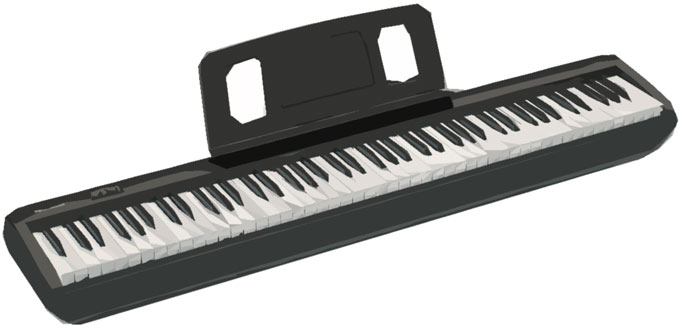
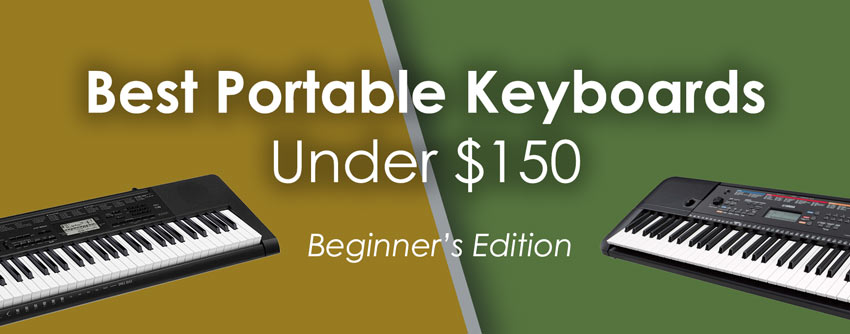

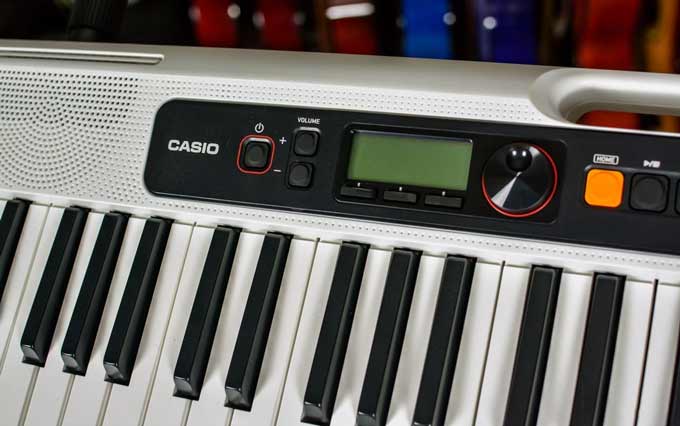

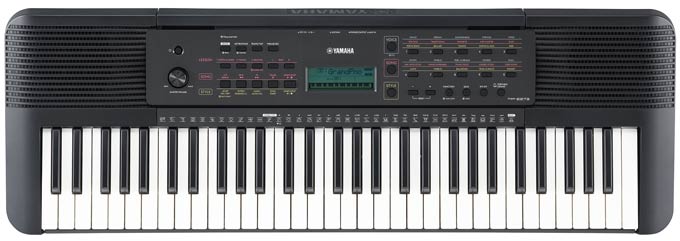
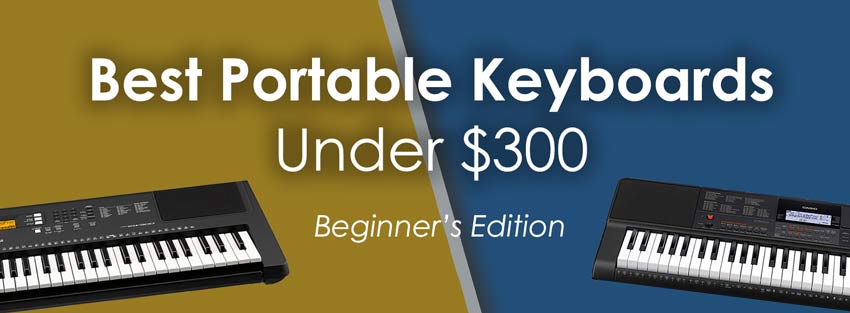
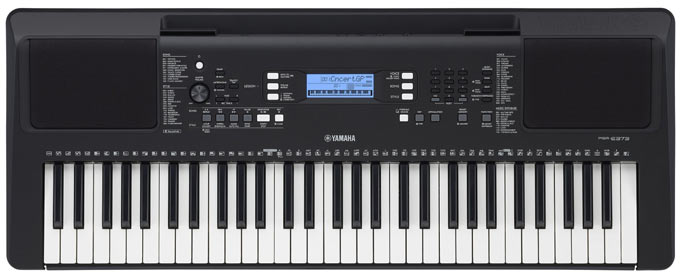
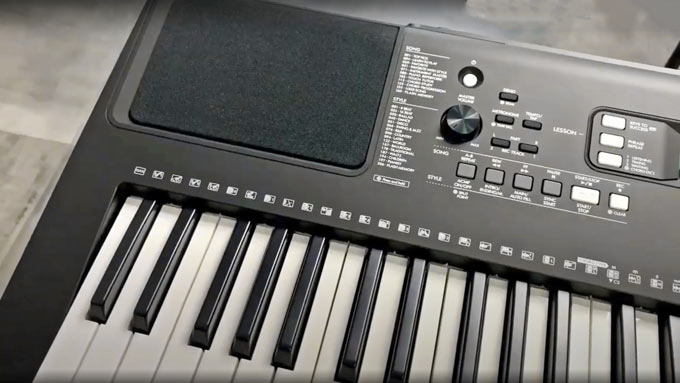


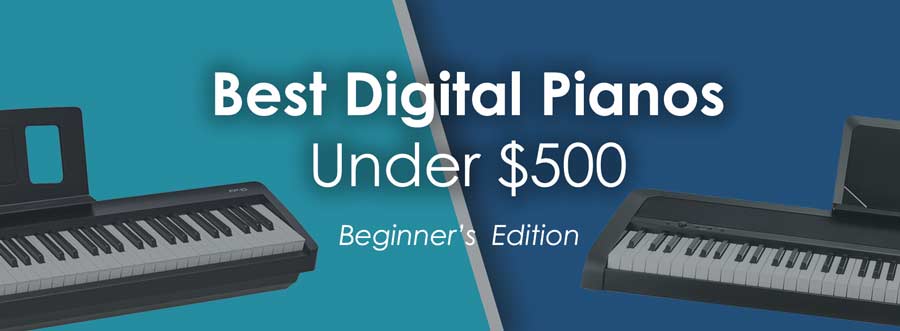

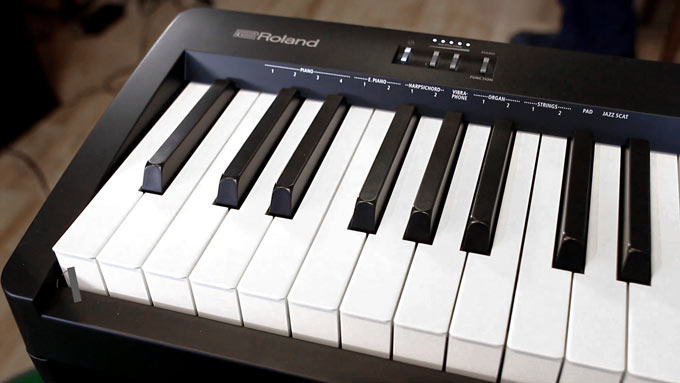

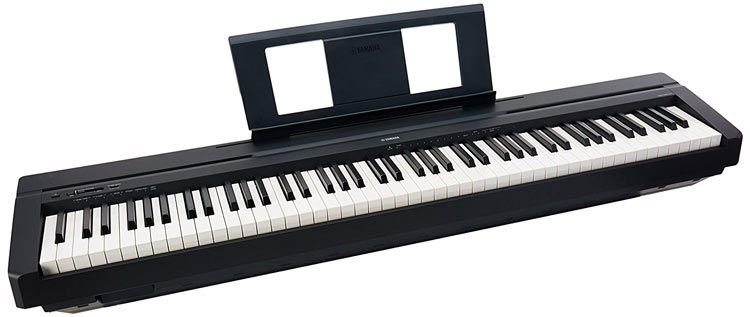
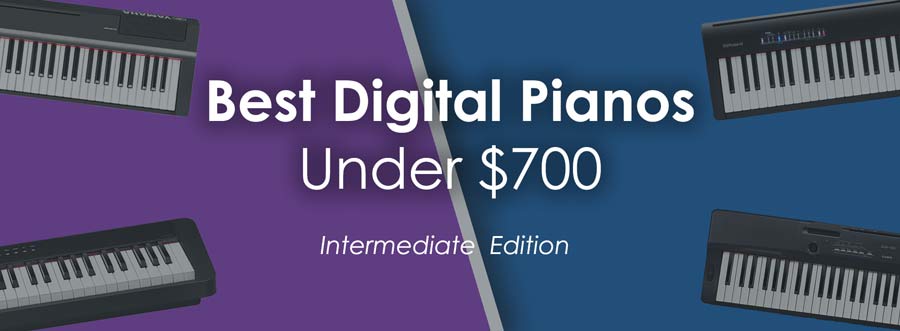
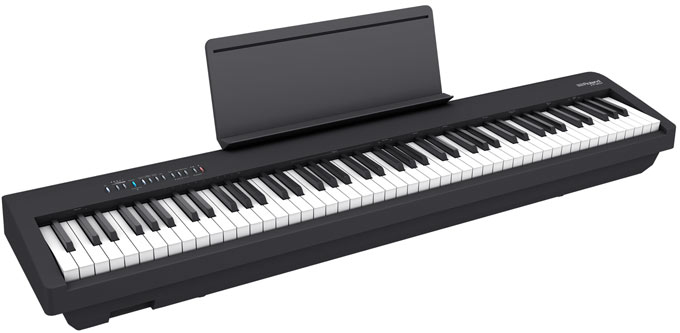

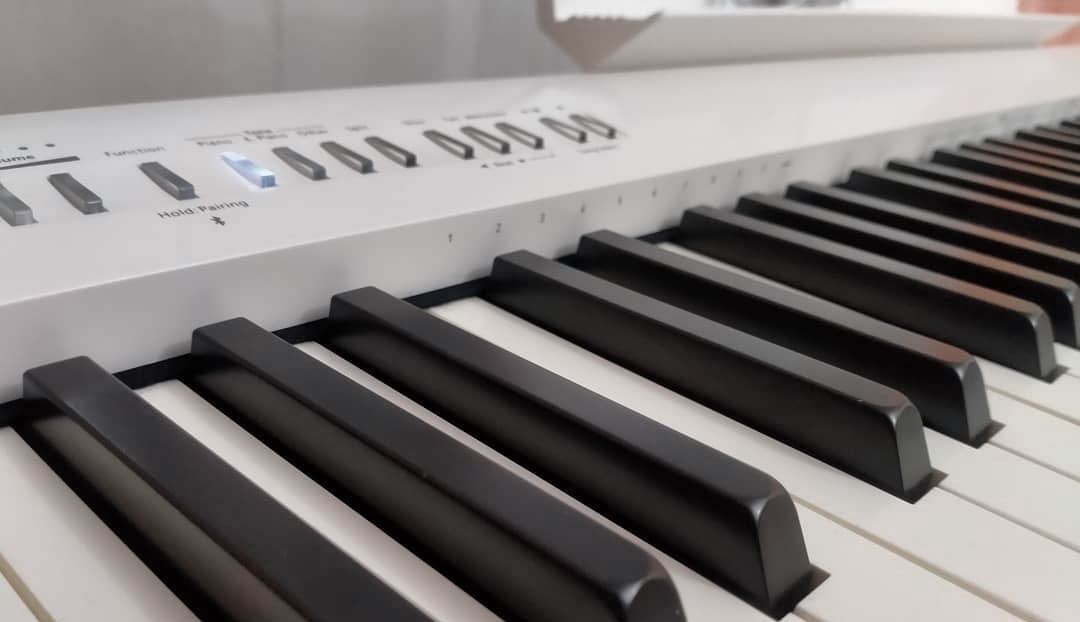
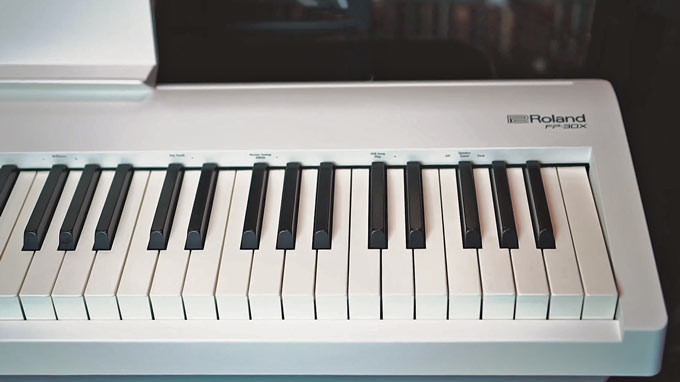

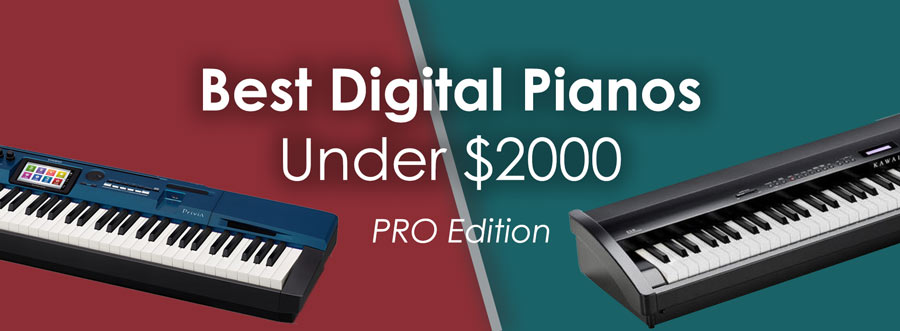

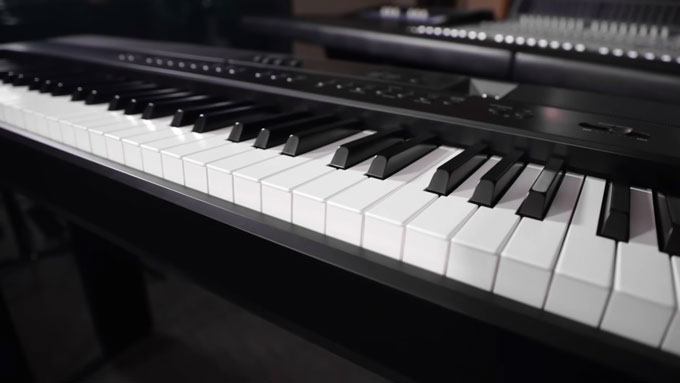

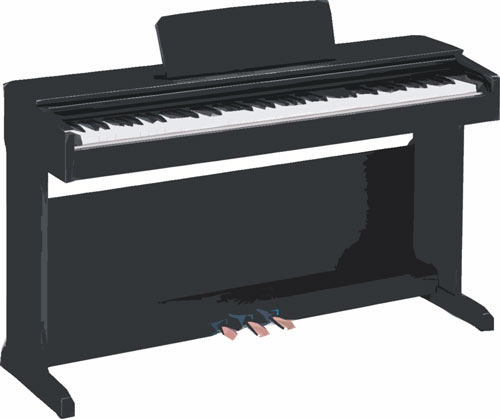
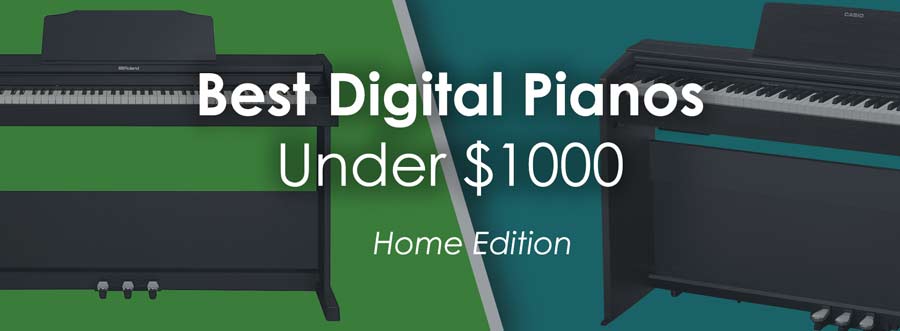
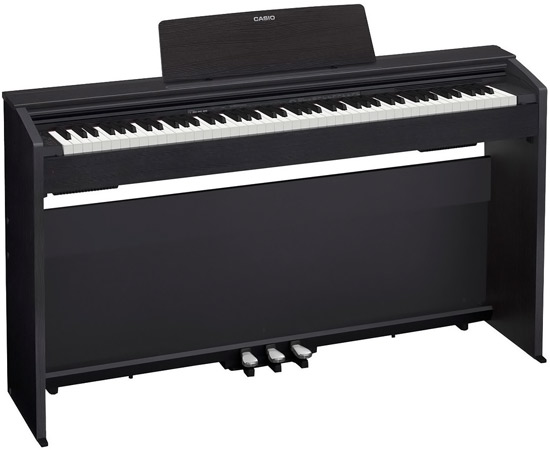
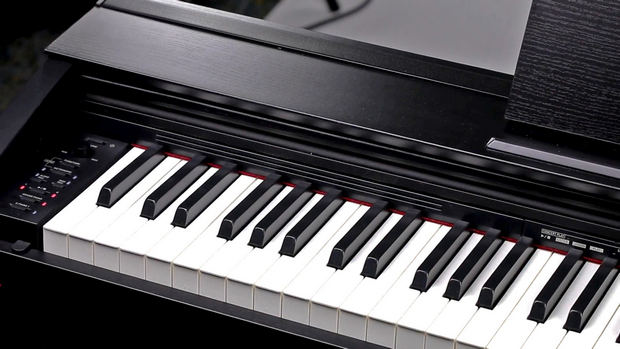
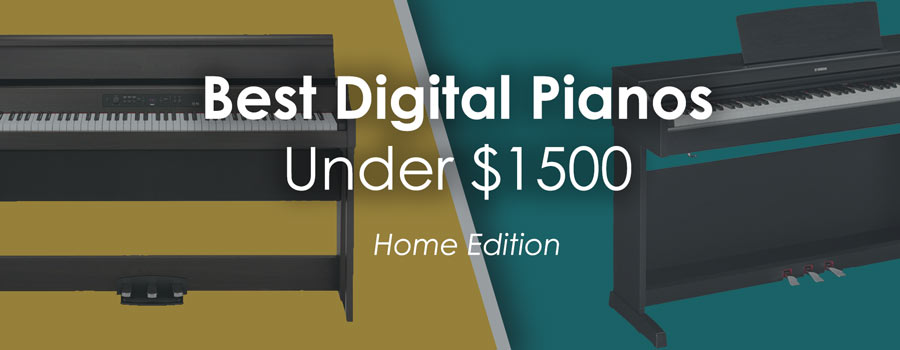
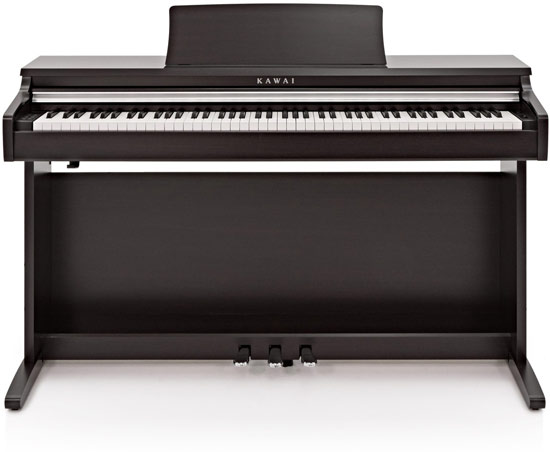

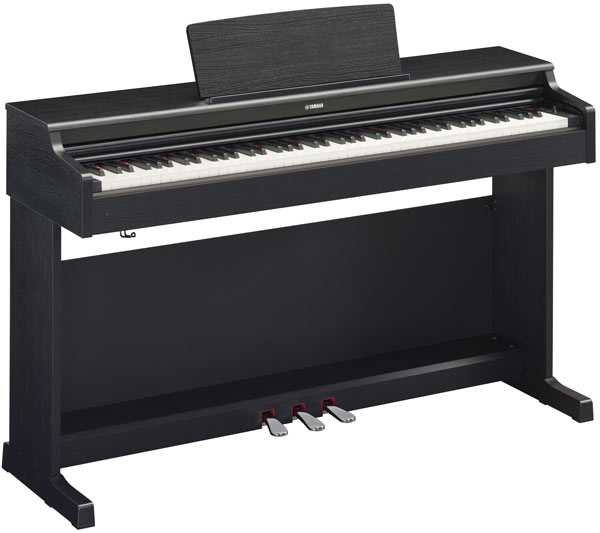

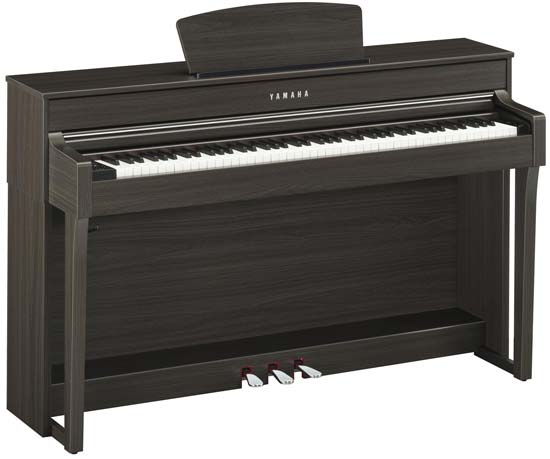
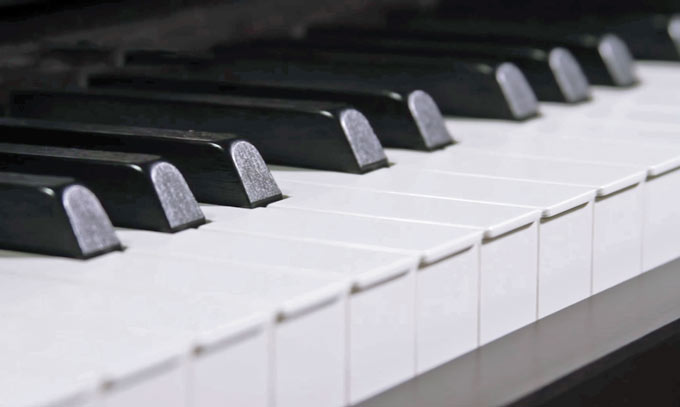




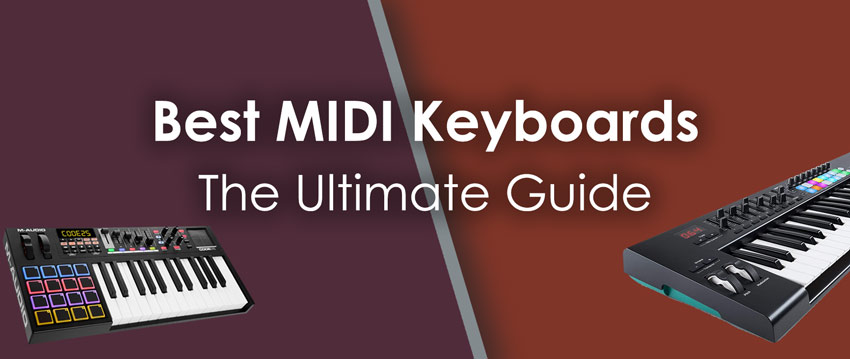
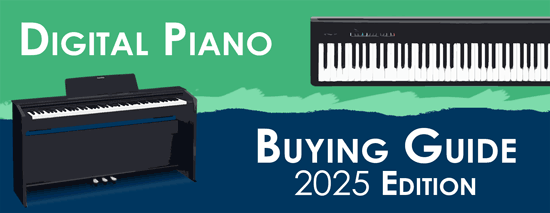


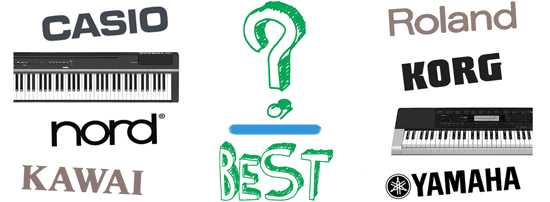
I can’t decide between the FP 30 and Korg D1. Which one would you suggest?
Hi Ken,
What are you buying an instrument for? The D1 is more like a stage piano; it doesn’t have onboard speakers, is this a non-issue for you?
Would you know if the $500 Roland and $500 Yamaha use aptX?
Hi Phil,
I’m afraid I don’t know the answer to that. Just out of curiosity, why are you asking?
I love your site! Does anybody sample Steinway grands? I would love to see best 5 choices for 1) purely piano sample quality and 2) keyboard touch. Care to comment? Thanks! Mike
Hi Michael,
In many cases, you’ll find that digital piano manufacturers that also make acoustic pianos (e.g. Yamaha, Kawai) will use their own instruments to record samples for their digital pianos. Other manufacturers (e.g. Roland, Casio, Korg) don’t explicitly mention what grand piano they use to record samples. It may be Steinway, Yamaha, Kawai, or something else.
If you’re looking for a particular Steinway sound, you might want to take a look at Piano VST Plugins. In many cases, they provide more detail and accuracy than an average digital piano, so if you’re looking for the ultimate sound quality, this might be something to consider.
I doubt Steinway in particular will let anyone sample their grands seeing as how they are super big on protecting the brand. Every piano must have steinway parts installed by a steinway technician at a steinway factory and be maintained by Steinway. A piano restored or renewed by anyone other than Steinway is no longer “really” a Steinway. “No piano is as good as a Steinway.” Don’t let the name fool you – if Steinway didn’t work on your Steinway, it might not be a Steinway anymore. I mean, they really drive the point home. Just from that outsider knowledge on their business model, I doubt they let anyone sample it. Could be wrong, maybe Roland can (I’ve seen Roland digitals in Steinway Piano Galleries). Anyway, This article was great.
Nonsense. If I tune my piano, it looses its identity ? Dexibel uses Steinway.
I didn’t mean tuning. And I didn’t say that I agreed with the idea I’m just saying that from my personal experience in Steinway dealerships and talking to Steinway employees or just reading Steinway literature, from a marketing perspective Steinway would like you to believe that unless they have everything to do with the piano that you own which has the Steinway label on it then it’s no longer truly a Steinway but I think that even they would not say that tuning it without it being a Steinway technician is going to cause the piano to have problems I think they’re mainly concerned with what parts are inside it (or who is doing the work) if you’re doing repairs or a restoration. Or purchasing a used piano outside of “the system” so to speak.
Check this out: https://www.modartt.com/pianoteq
Their Steinway’s sound models are amazingly realistic and they are approved by Steinway!
Hi Lucas
I recently bought an FP30 and I love the feel of the keys but the sound does feel a bit muffled. Should I invest in good monitor speakers/headphones? Or should I return it and go for a different digital piano? Any you would recommend?
Hi May,
This is something that most entry-level (and even some mid-range) digital pianos are guilty of. Unless you’re playing an expensive multi-speaker console digital piano, I usually recommend using headphones or external speakers as it does improve the sound quality significantly. Headphones are obviously cheaper and easier to set up, but depending on your needs, monitor speakers or even PA speakers might be your preferred choice.
Hi.. I am being offered 2 option for a console piano. The AP 260 celviano and the PX770. Which one should i get?
Hi Lucas,
I have the choice to get a new KORG B2 for 300€ or a CASIO CDP-S100 for 340€. I’m looking just for start learning piano lessons. I like CASIO for its features but KORG seems to have a best value for money. What you could suggest me? Thanks!
Hi Roger, this is a tough one…I’d choose the B2 for its sound, and the CDP-S100 for its action. Both are good options for a beginner.
Thank you Lucas. Finally I chose B2.
Congrats 👍 Hope you like it!
Hello, I’m just wondering if its best to invest in getting a good silent instalation in my acústic piano, or getting the Clp 745. What do you think? Thank you in advance.
Hey Oscar,
Despite the CLP-745 being a high-end digital piano, it’s still hard to compete with the feel of an acoustic piano. Of course, it depends on which acoustic piano you have and which silent system you want to install. The latter will determine the quality of the piano sound when the ‘silent system’ is active (when you listen via headphones).
Hello Lucas,
I am thinking to buy either the new CLP-735 or CSP-150. I am an intermediate piano player. I have had regular upright piano before, so this would be my first digital piano. Do you think the new CLP-700 series could be better than two years older CSP series?
Hi, there are a few improvements in the new CLP-7xx series, including the slightly tweaked key action mechanisms, and the new improved sound engine with binaural samples available for the Bosendorfer tone. Apart from that, they are very similar as far as piano playing goes. Of course, the CSP-150 comes with many more styles, songs and sounds than the CLP-735 but the question is whether you need all of that. Also, note that the CSP-150 requires a smart device to be connected to use most of its features.
Hi, thank you for your kind reply! I had an opportunity to test these pianos, and I decided to go for Kawai CA59 instead. The feeling and touch with the CA59 was much better for me if compared to Yamaha. Yamaha was also really nice but for me the Kawai felt more realistic. It reminds me the touch I have get used to while playing real acoustic piano. The sound with headphones was also richer, and I probably will play most of my time with headphones. You are also right, I might not need all of those fancy sounds since I like most the genuine sound of a grand piano or an upright piano.
That’s a fantastic piano! Congrats 😎
Hi Lucas. I hope you can help me. Our daughter is learning to play piano and we have an upright at home but as we are working from home she wants a digital piano she can play with a head set/ear buds so her playing isn’t distracting. I had a hard time understanding which of these, if any, offered that as a feature.
Almost all of these offer the ability to use a headphone.
Yes, as John pointed out, pretty much every modern digital piano comes with a headphone jack, sometimes even more than one.
Lucas:
Dean Grinsfelder (https://www.imdb.com/name/nm0342477/) is a college roommate of mine and he suggested I chat with you regarding a couple of good keyboards under $1,000.
My daughter and both enjoyed our Shaffer& Sons 60″ grand in our home. When we sold the house, there just wasn’t room for a grand style piano going forward. We both miss it very much and want to get back into playing.
I’m looking for two keyboards – one for her, one for me – same for both.
I’ve seen your comments on Kawai and Yamaha but the features I need most are:
1. A keyboard that can be folded up, cased, and slid into a closet for storage between use.
2. We really want that weighted keyboard feeling of a regular piano ( I saw a Steinway add on or plugin mentioned)
3. I need it to have a stand and a seat (seat can be separate – desire a collapsable but that isn’t as stable as an upholstered floor seat)
4. I’m investing in some good Sony or other nice canceling headphones for her as I have a pair already.
Her birthday is Feb 7 so I have a little time.
I’d appreciate your recommendation(s).
Thanks, Bob Britz
Hey Bob,
Sorry to hear you had to part ways with your Shaffer & Sons grand 🙁 Hopefully, you can find something that brings a similar level of enjoyment and realism.
1) Just to clarify, are you looking for a keyboard that would literally fold up? Like in half? I’m not aware of any digital pianos with weighted keys that would have such a design.
2) Well, as much as digital pianos have advanced over the years, you’re still not going to get the “feeling of a regular piano”. The the closest to that are hybrid digital pianos but even then an experienced pianist will notice the difference.
4) I’m not sure if noise-canceling headphones are the best choice to use with a piano, though I’ve never tried it, so might be wrong here. Most of the noise-canceling headphones that I saw are wireless, which is less than ideal because even if you manage to connect them to your digital piano, latency will be a deal-breaker.
Thank you so much for this list!! In the market for a digital piano and I am leaning towards the Casio Privia PX-S1000!!
Glad to hear you found the article helpful! Hope you enjoy whatever instrument you end up choosing 🙂
What is your opinion about Yamaha CLP-930 or CVP-83s?
Hey Nada, these are very old digital pianos that were in production in the early 2000s. I’d recommend looking into more current models.
Hey Lucas.
I hope you are well. Your article is quite interesting in particular Casio, Yamaha and Roland FP-10.
Thank You
Regard
Have you had a chance to review the Nord Grand piano? If so, was there a reason not to include in this review? With the wood stand, I feel this combination could compete in sound, be an attractive piece to keep in the home, and still be less expensive than virtually all new acoustic pianos.
Hello! I want to take up playing piano again however due to the size of the house I am currently in I cannot fit anything more than a 61 key digital piano 🙁 . By far the most most most important thing to me is the weighted feel, to make the keyboard feel as much like an acoustic piano as possible. I have looked through many reviews though it seems the 61 key digital keyboards all seem to lack this feature in exchange for others. Is this true? What would be your recommendation for a 61 key digital piano or keyboard that feels the most like an acoustic piano? Thanks!!!
Thank you for this great list! I am a college student looking to buy a good digital keyboard to continue to practice in my dorm. I was considering the Kawai ES920, as it is the more recent version of the ES8 on this list. I have played for years and have grown up playing grand pianos, so would this be a good option for me, or do you think the action of the digital keyboard would be too noticeably different from a grand piano? Are there other options in this mid-range that might be good choices?
What do you think about the Kawai ES920 vs the Nord Grand? They have the same action and I’m wondering if there’s any advantage to the Nord other than its stunning wood casing?
While the ES920 has very good piano tones, I’d say the main advantage of the Nord Grand is in its sample library. Not only does Nord have some of the best piano samples in the industry, you can freely swap out the ones you don’t use and load other ones from Nord’s library on it for free. That ability is something you simply don’t get on other digital pianos, even ones that cost much, much more.
The downsides of the Nord are that it is very expensive, their wood furniture stand, if you want it, is absurdly overpriced, and it has no built-in speakers so you’ll either need to purchase Nord’s expensive monitor speakers or invest in your own system. Or you could rely on headphones.
Honestly, if I could afford the Nord Grand and the accessories needed to make it completely functional, I’d be all over it. Their White Grand, Italian Grand, and Royal Grand 3D piano sounds are just too good.
Good points, I thought that before buying the Nord but now I’m finding the piano sounds aren’t as impressive as I thought they would be. They’re good, don’t get me wrong, but everything except their White Grand sounds kind of muffled and old compared to the clarity of some VSTs. I’m thinking that (for the money) the best of all worlds might be a Kawai ES920 with the RSIII action and then a new Macbook running the VSL Steinway or Bösendorfers fed back into the onboard speakers of the ES920, all for the price of the Nord Grand. I don’t think Nord’s sounds can compete with VSL now that I’ve heard them.
ES920 plus some VST software would definitely run you a lot less than the Nord, and you get the decent speakers and whatever piano samples you like. Sounds like a pretty good choice to me!
I did forget to mention that Dexibell is the other player in this space with really excellent piano tones, IMO. It’s too bad you can’t get them any other way except bundled with their otherwise unexciting and overpriced keyboards, or with a horridly overpriced “sound module”.
Here’s my question: I have the opportunity to buy a Roland FP90 or a Yamaha ydp144 – which way should I go?? Thanks.
Hi Lisa,
The Roland FP-90 is a much more superior instrument to the YDP-144, in my opinion. It’s also usually twice as expensive…
Hello and thanks for your useful information
I am going buy a digital piano and I’m doubtful among these models. would you help me out please:
Roland RP501
Korg G1
Kawai CN (27,29)
I do want to have only natural sound + real key reaction and other extra features are less important to me.
It would be nice of you if you rank them from best to least
Thanks
Hello, thank for time dedicated to millions of notes played and infor shared.
I wonder if you got to try the Roland F701 and how it feels compared to models such as the Korg G1 (which seems to be discontinued or something) or YDP54 from Yamaha… three of them very appealing regarding design by the way.
Regards